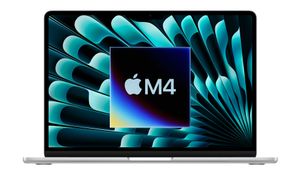JAKARTA - The iPhone 16 has officially replaced the Lightning connector with USB-C ports in all of its models. This change opens up a variety of new capabilities, especially for iPhone 16 Pro and iPhone 16 Pro Max users who now support faster data transfer speeds of up to 10 Gbps via USB 3. Thanks to USB-C, users can now easily connect various accessories and peripherals, such as external screens, additional storage, cameras, and charge using the same cable for various other devices.
With the iPhone 16, users can now charge all Apple devices using USB-C, such as the latest generation iPad, Mac, and remote Apple TV. Not only that, the iPhone 16 is also equipped with quality USB-C cables that support charging. For maximum charging, the iPhone 16 can be filled up to 50% within 30 minutes using a 30 watt power adapter. Users can also use a higher-power adapter, such as MacBook's, to charge faster.
Another advantage of the USB-C port on the iPhone 16 is its ability to charge other devices. With a power output of about 4.5 watts, the iPhone 16 can be used as a mini bank power to charge the AirPods or even other iPhones simply by connecting the two devices via USB-C cables.
The USB-C port on the iPhone 16 also allows users to easily connect the device to the external screen via the USB-C to HDMI cable. With this feature, users can easily display the iPhone screen on the monitor or 4K TV. If you want to use an external screen for long sessions, such as playing games, it is recommended to use the Apple USB-C Digital AV adapter, which allows HDMI, charging, and USB-C connections simultaneously.
For those who travel frequently and want to save photos or videos from the camera, users can directly link external hard drives or SD card readers to the iPhone 16. These files can be managed through the Files application on the iPhone. In addition, iPhone 16 Pro users can also record ProRes 4K videos at 120 FPS directly to external storage via a USB 3 connection, which is very useful for large video files with sizes up to gigabytes per minute of recording.
The USB-C port on the iPhone 16 supports almost all plug-and-play accessories without requiring additional drivers or settings. Users can connect USB keyboards, USB-C mini microphones to record podcasts, or even use a USB-C adapter to Ethernet to get a fast and stable internet connection. In addition, musicians who use the MIDI keyboard can easily create music anywhere using an app like GarageBand.
SEE ALSO:
Wireable Headphones And Multi-Port Hubs
Although many people have switched to wireless headphones, users who are still loyal to wired headphones can now easily use USB-C headphones on the iPhone 16. This USB-C headphone is also compatible with other devices such as the iPad and Mac that have similar ports.
USB-C ports also allow the use of multi-port hubs to connect various additional devices simultaneously. For example, Anker's 5-in-1 hub which supports connections to external screens, USB accessories, and charging through a USB-C port. Even so, it should be noted that the iPhone 16 can only provide a maximum power of 4.5 watts, so that if using accessories that require greater power, users need to add external resources.
With these new features, the USB-C port on the iPhone 16 makes it more flexible and versatile, allowing users to do more with one device.
The English, Chinese, Japanese, Arabic, and French versions are automatically generated by the AI. So there may still be inaccuracies in translating, please always see Indonesian as our main language. (system supported by DigitalSiber.id)


















